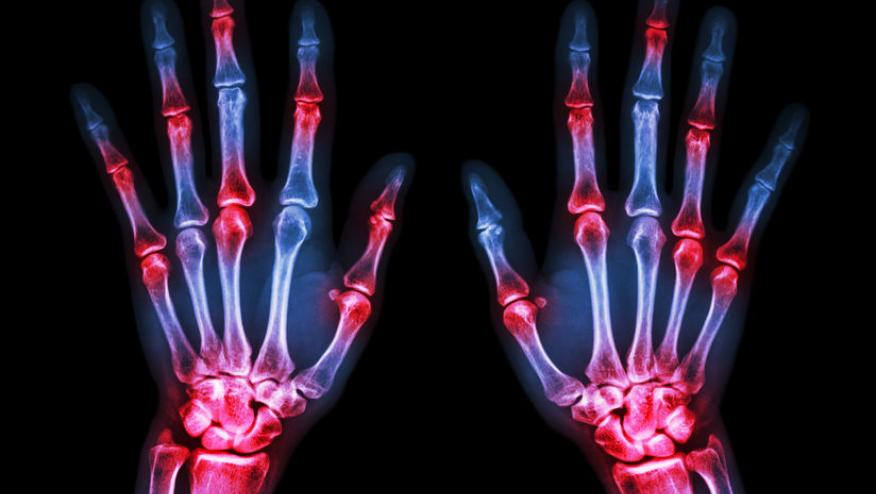An update on JAK inhibitors and cardiovascular risks Save

In the last 2 years, there has been more caution and vigilance with the use of JAK inhibitors in the treatment of rheumatoid arthritis (RA) due to the risk of cardiovascular (CV) events. These CV events include major adverse cardiac events (MACE) and venous thromboembolic events (VTE). The publication of the ORAL surveillance study (1), a post-approval safety study conducted in RA patients aged ≥50 years with ≥1 CV risk factor, has resulted in increased caution and greater emphasis on assessment of MACE and VTE risks in patients starting JAK inhibitors.
In the ORAL surveillance study, during a median follow up of 4 years, the pan-JAK inhibitor tofacitinib, the exposure adjusted incidence rate (EAIR) per 100 patient years was 0.98 (95% CI, 0.79 to 1.19) in the combined tofacitinib group. For pulmonary embolism (PE) the EAIR per 100 patient years was 0.54 (95% CI 0.32-0.87) for the 10mg bd group and half this risk in the 5mg bd group at 0.27 (95% CI 0.12-0.52). The deep vein thrombosis (DVT) EAIR per 100 patient years was 0.38 (95% CI 0.20-0.67) in the 10mg bd group and 0.30 (95% CI 0.14-0.55) in the 5mg bd group. Both the MACE and VTE risks were higher in the tofacitinib compared to the anti-TNF group.
At EULAR 2023, I am looking at the topic of JAK/TYK2 inhibitors, and there are some new developments in this area.
POS0824 by Mariette X et al, shows the incidence of MACE and VTE in 3691 RA patients treated with filgotinib. The EAIRs (95% confidence interval [CI]) were 0.40 (0.3, 0.5) for MACE and 0.19 (0.1, 0.3) for VTEs. The EAIRs of MACE and VTE were higher in patients aged ≥65 vs <65 years but were generally similar for filgotinib 200mg od and 100mg od within each age group.
In OP0221 by Popa C et al, this Dutch study of over 15,000 RA patients showed that the EAIR per 100 patient years for CV events was 2.0 in the JAK inhibitor (mostly tofacitinib and baricitinib) group. In the biologic DMARD group, the EAIR per 100 patient years for CV events was 2.42. This study showed the incidence of cardiovascular events in JAKi starters was not higher than in bDMARDs starters, and similar for tofacitinib and baricitinib. In another real world registry study, POS0974 by Brigante JA et al data from the BIOBADASER 3.0 registry of patients diagnosed with RA and PsA is presented. From over 6000 patients, the overall frequency of MCAE 2.2% in the Anti-TNFa group, 2.37% in the JAK inhibitor group, and1.84 in the control group.
A post hoc analysis of the ORAL Surveillance data suggested that patients with a history of atherosclerotic cardiovascular disease (ASCVD) were most at risk relative to TNFi (2). In POS0828, the use of upadacitinib showed an overall EAIR of adjudicated MACE of 0.3 per 100 patient years. The rates of MACE were higher in UPA-treated patients with a history of ASCVD (1.9 n/100 PY) compared to those without a history of ASCVD (0.2 n/100 PY) in the overall population.
In AB0237 by Kerekes G et al, tofacitinib was shown to suppress the production of multiple angiogenic biomarkers such as VEGF and IL-6 after 12 months of treatment. A number of these biomarkers are involved in carotid atherosclerosis and vascular inflammation.
In AB0306 by Huang H et al, there was a short-term increase in total cholesterol, HDL and LDL between 4 and 12 weeks of treatment with tofacitinib. This returned to baseline between weeks 12 and 48, with a continued increase in HDL. Overall the elevation in lipid and lipoprotein profiles in RA patients prescribed with tofacitinib was significantly higher than those without.
These studies presented at EULAR 2023 increase our understanding on the use of JAK inhibitors, and there may be differences in the outcome of MACE and VTE with different agents, e.g., tofacitinib, filgotinib and upadacitinib. These are post-hoc analyses of the data from separate clinical trials, they may not fully assess the MACE or VTE risks. Evaluation and assessment of ASCVD is helpful when considering a JAK inhibitor and the risk and benefits explained to the patient.
References










If you are a health practitioner, you may Login/Register to comment.
Due to the nature of these comment forums, only health practitioners are allowed to comment at this time.